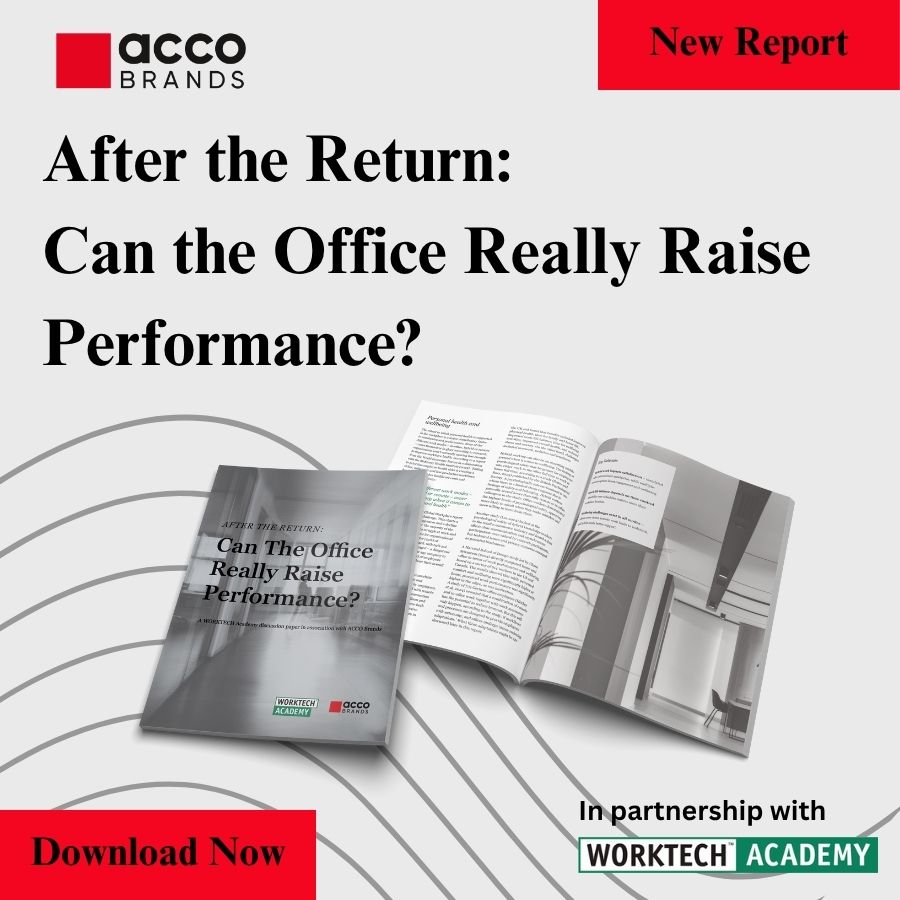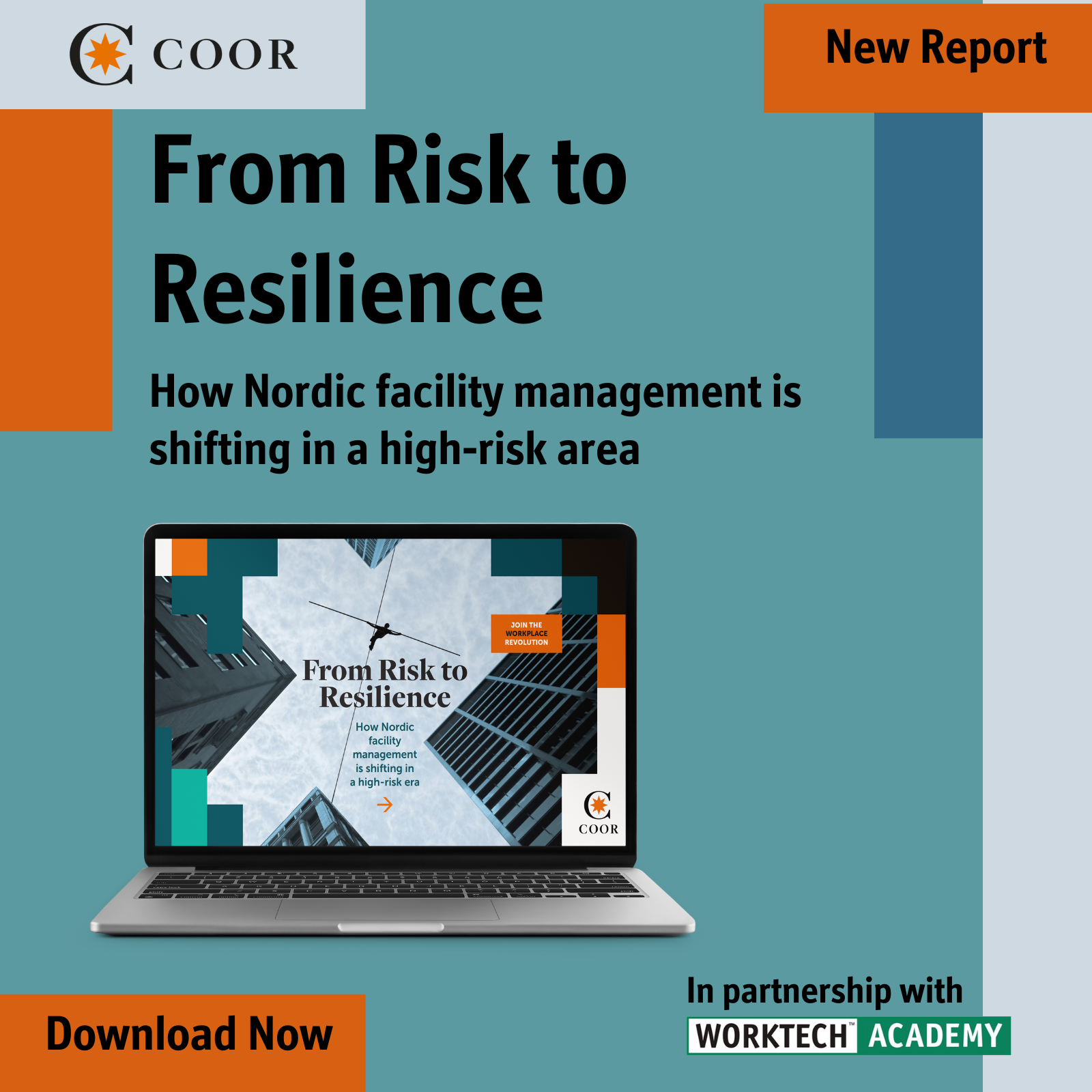Outcomes, not outputs: how law firms can build a high-performance workplace
As law firms modernise their offices, challenges are emerging around how to deliver flexible, tech-enabled environments that employees actually want to use
Like other industries in 2025, legal firms face a significant workplace challenge in how to ensure employees are happy and productive, while still gaining return-on-investment for their physical office spaces.
The time spent hybrid working has taught employees – and employers – that productivity isn’t always determined by where you work. That’s not to say that the office isn’t valuable, but what employees expect from a workplace has shifted.
Law firms have a reputation for tradition that’s perhaps unfair. Many of the firms I’ve visited recently have had breathtakingly modern-looking work environments, visibly refreshed to show that they are forward-thinking businesses. They include open plan layouts, restaurants and breakout spaces. But, despite the investment in facilities, some employees still baulk when asked to spend most of their time in the office – and no one wants their value to be measured by presenteeism.
For senior management looking for ROI it can feel like nothing’s working, but it’s not enough to just design an attractive layout and add some sofas. Employees want their workplace to feel like an optimised environment. They want it to suit their working needs, not just their social ones. Ultimately, they want a justification to visit the office, especially with the quickly rising costs of commuting and living in general.
Outcomes, not outputs
To maximise the potential of a workplace, decision-makers should focus more on outcomes than outputs. There’s a big difference between the employers demanding productivity and those that enable it – and enablement begins by equipping people to succeed.
Despite the strides legal companies have made to modernise their facilities since the pandemic, meeting employee expectations isn’t straightforward. In 2025, we have a wider range of employee preferences to cater to than ever before.
There are now five separate generations present in our workplaces – some returning to the status quo after decades-long careers, and some finding their way in a professional work environment for the first time. Each group has very different expectations from their workplace and different assumptions of how the office should work for them. Flexibility is key to meet the disparate needs of a modern workforce.
Design beyond aesthetics
Legal workplaces have embraced some best practice already. I’ve visited offices with a variety of private client meeting spaces and litigation ‘war rooms’, as well as spaces that provide an area for teams to socialise. Yet our recent State of the Workplace survey with WORKTECH Academy still showed that two of the top three frustrations faced by legal sector employees were ‘difficulty with ability to focus’ and ‘lack of collaboration spaces’. These are the sort of issues that, if resolved, help coax employees back to the office voluntarily.
Areas for distraction-free work are vital, and mimic the sort of environment many people may have become used to at home. And private booths and peripherals like noise cancelling headphones help people that want to focus feel productive at the office. Likewise, keeping meetings and collaboration areas away from quieter spaces helps both groups maximise their productivity.
How policy leads to productivity
Technology is another key factor in an employee-centric workplace, and an area that legal firms historically have been less keen to embrace. Hardcopies are a still legal requirement in some cases, and that habit has made it difficult to move on from paper.
A reliance on physical documents limits the impact of data analysis and AI integration, and heightens the friction employees can feel completing their daily tasks. If a document needs everyone to sit around the same desk to interact with it those employees sacrifice any flexibility the rest of their workplace might enable.
AI in particular feels almost tailormade for the legal sector. AI is trained on emerging knowledge, and with enough case data to lean on, could save hours of time. Letting young lawyers lean on AI for research and more menial tasks means their creativity can thrive. But first firms need to be clear on policy.
Our State of the Workplace survey also revealed that only half of legal employees have a clearly communicated AI policy in place in their firm, and 25% of all legal respondents weren’t aware of any policy at all. For AI and other technology to be effective its users must feel empowered, and that’s what a clear policy enables. Giving your staff access to tools that help them boost their productivity and save time on mundane tasks is absolutely part of a supportive work environment – it benefits employees no matter where or how they prefer to work.
The mission for law firms is one of adapting their work environments from traditional offices to flexible, employee-centric workspaces; and that starts with looking at the outcomes we want to achieve and working backwards. Employers want more productivity and more engaged staff, so let’s break down the barriers employees tell us they’re facing.
When employees feel supported, respected and empowered to make their own decisions about how they work you get the best out of them. And when they have access to flexible, tech-enabled workplaces they’ll visit them – not because they have to, but because they do their best work there. That’s a modern workplace: one that appreciates that business success is driven by people.
 Claire Ward is the Chief Innovation Officer at SPS. She joined SPS UKI as Head of Solution Design in 2021, now leading several functions including marketing, bid management and solution design. Before joining the UKI leadership team at SPS, Claire held several senior positions in start-ups, scale-ups, and large PLCs. She specialises in creating value through transformational change and innovation, and she is passionate about promoting diversity and inclusion in the workplace.
Claire Ward is the Chief Innovation Officer at SPS. She joined SPS UKI as Head of Solution Design in 2021, now leading several functions including marketing, bid management and solution design. Before joining the UKI leadership team at SPS, Claire held several senior positions in start-ups, scale-ups, and large PLCs. She specialises in creating value through transformational change and innovation, and she is passionate about promoting diversity and inclusion in the workplace.







